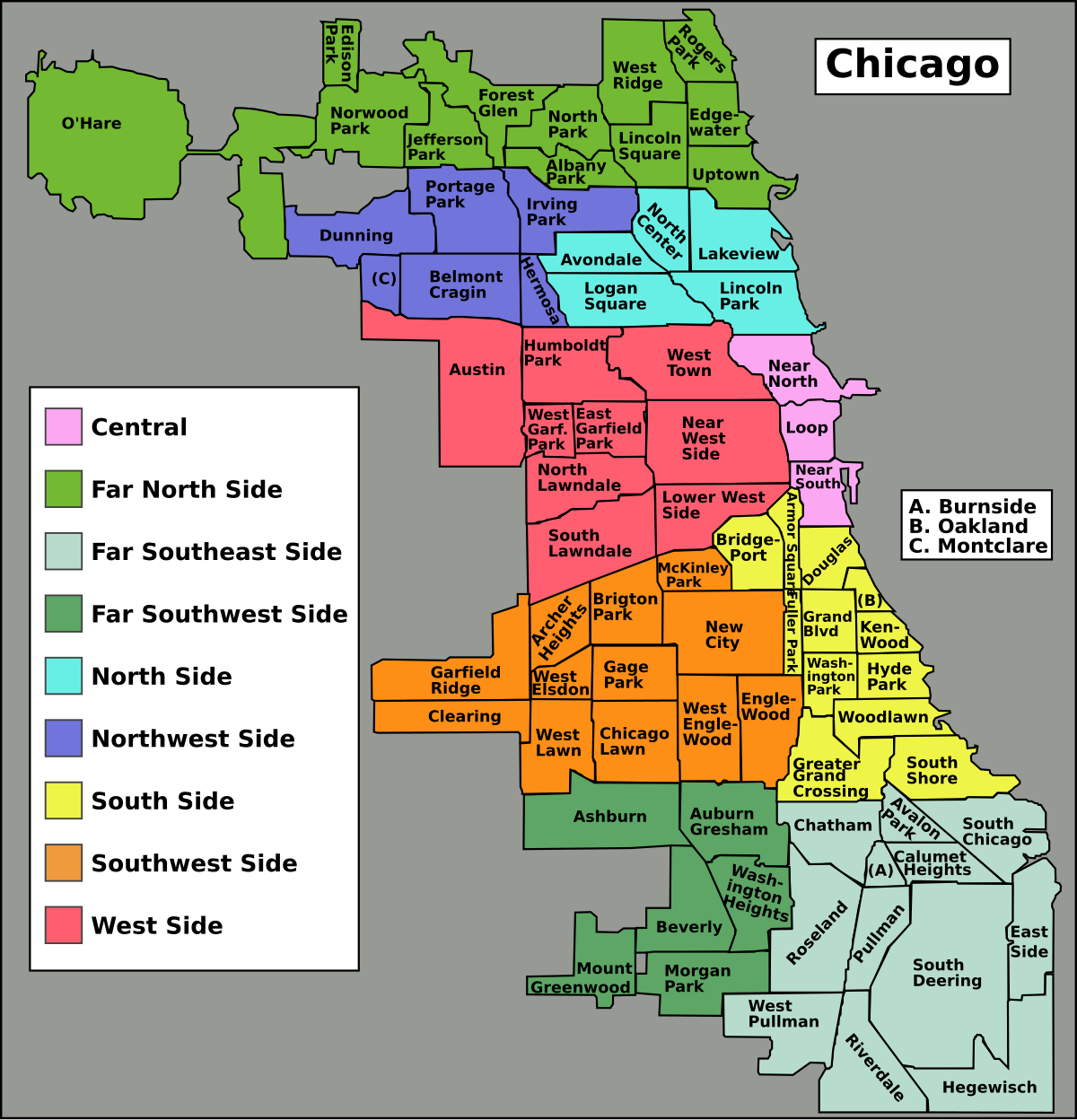Demographic Visualizations
Click for more visualizations of different demographic information for the Chicago neighborhoods.
Demographic visualizations are important because it helps us understand trends that in this case tie racial background with different neighborhoods, incomes, and populations. When the data correlates strongly, then we can look further to prevent possible systemic injustices to solve these problems.

Percentage of White People by Chicago Neighborhood
White people make up the largest percentage of the Chicago population, but we found that the neighborhoods with the largest white populations tend to be in the northernmost neighborhoods, on what the image calls the Far North Side of Chicago. We also found that neighborhoods tended to have either a majority white people (50% +) or under 15%. There are exceptions, but most of the neighborhoods fall in one of these two categories.
Percentage of Black People by Chicago Neighborhood
Neighborhoods with a majority of Black people tend to be on the south side of the city, either on the Far Southwest Side or the Far Southeast Side. Black people also tend to live close to one another, as most neighborhoods with black residents had either 80% black residents or under 10% black residents.
Percentage of Latino People by Chicago Neighborhood
Neighborhoods with a majority of Latino people tend to be inland and closer to the center of the city. Almost all of the neighborhoods that have a majority of Latino people are on the western half of the city, mostly falling into the Northwest, Southwest, and West sides.
Percentage of Asian People by Chicago Neighborhood
Armour Square is the only majority-Asian neighborhood in Chicago, which is on the South Side near the Loop neighborhood. The two largest Asian neighborhoods are on the South Side, but close to the center of the map, and the next two are on the Far North Side, furthest away from the center of the city.
Percentage of "Other" People by Chicago Neighborhood
Other racial groups make up a very small percentage of the Chicago demographics. They seem to be spread out pretty evenly amongst the neighborhoods, so we think that small groups of people of the same race group together, but it isn't significant enough to make a statistical difference on these graphs.